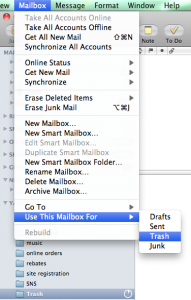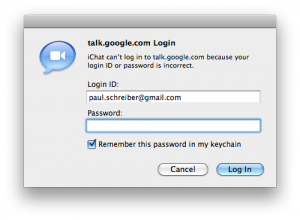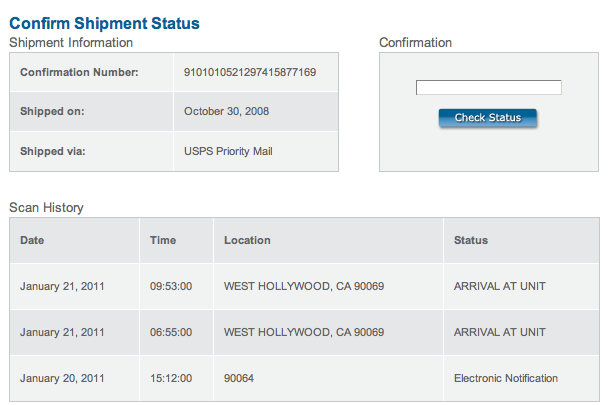A few weeks ago, I was helping my cousins set up their new iMac. Once everything was up and running, she inquired about adding their Yahoo account to Mail. The conventional wisdom says you can’t do this. Yahoo charges for POP access. IMAP? Unavailable.
But then she hands me her new iPod touch…with her Yahoo mail account working just fine. It must get the mail somehow. And it’s highly unlikely Apple wrote some sort of custom HTTP-Mail transport just for them.
You can have IMAP access to your Yahoo Mail account. For free. Here’s how.
Cutting to the chase
IMAP server: apple.imap.mail.yahoo.com (username = Yahoo ID)
SMTP server: apple.smtp.mail.yahoo.com (username = [email protected])
SSL enabled. Authentication = password.
Step-by-step guide to configuring Mac OS X Mail for Yahoo
- Go to Mail > Preferences…
- Click Accounts (toolbar)
- Click + (lower left)
- You’ll see the first pane of the wizard. Enter your email address and password. Then click Continue.
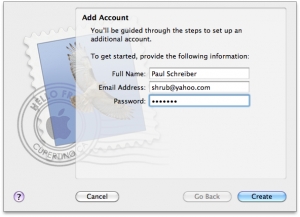
- Mail recognizes this as a Yahoo account. But you’re not a paying Yahoo Mail Plus customer, and don’t have access to the POP server. Don’t worry. That’s okay. Click Continue anyway.
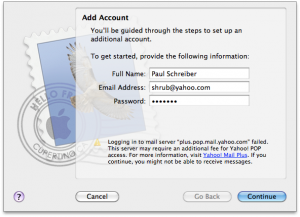
- On the next screen, select IMAP from the popup and enter apple.imap.mail.yahoo.com as the server name.
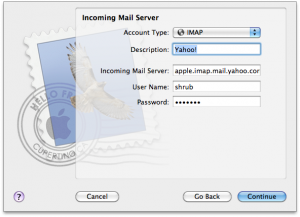
Note: most of the instructions on the internet tell you to enter imap.apple.mail.yahoo.com. While this also works, you’ll get an SSL error:
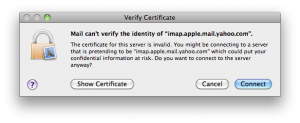
since Yahoo’s wildcard certificate is for
*.imap.mail.yahoo.com. If you do this, you have to click Show Certificate, check the “Always trust…” checkbox, click connect and enter your Mac OS username and password.Why bother?
- Next, enter apple.smtp.mail.yahoo.com as your SMTP server. Enter your username (full yahoo email address) and password and click Continue:
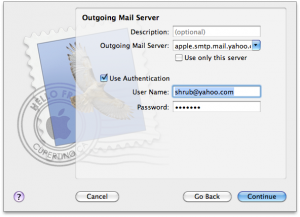
- The good news: Mail has recognized this as not just an IMAP account, but a Yahoo IMAP account.
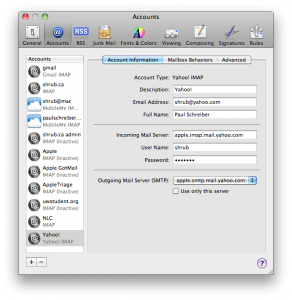
The bad news: it thinks it’s a POP account, and has set the port to 995.
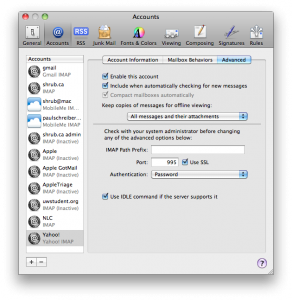
Change the port to 993.
- Finally, we need to set up the Junk mail folder. Click the Mailbox Behaviors tab. Besides Junk, check “Store Junk messages on the server.”
Then, close the preferences window. When prompted, click Save.
- Now, put your feet up. Depending on the amount of email you have, it could take an hour or more to download it all. Yeah, you whose friends email them photos instead of posting them to Flickr. That’s right. You.
Once that’s done, you need to identify four mailboxes as special: Draft(s), Trash, Sent and Bulk Mail (Junk).
Select the Draft folder. Then select Mailbox > Use This Mailbox For > Drafts:
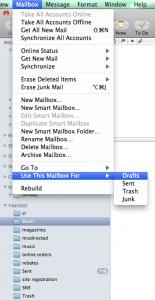
Select the Trash folder. Then select Mailbox > Use This Mailbox For > Trash:
Repeat for Sent and Bulk Mail.
